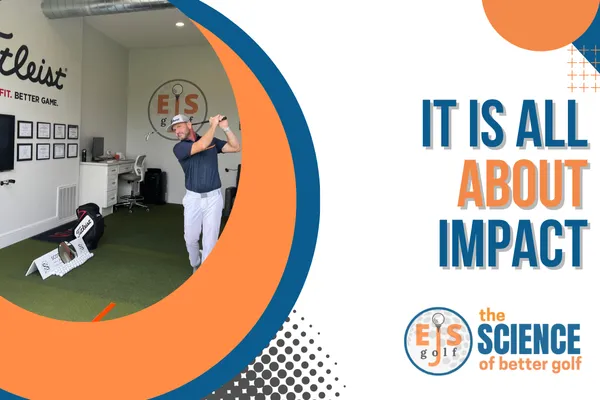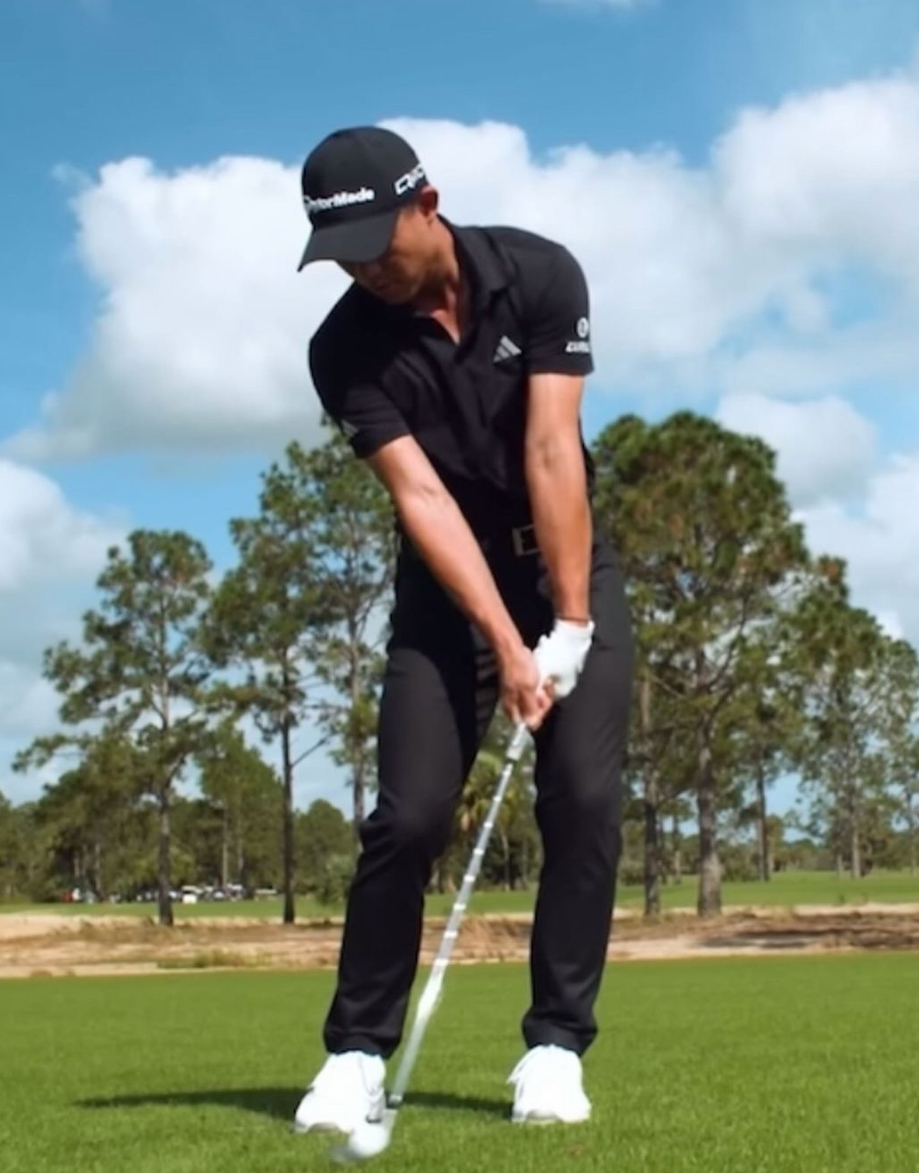EJS GOLF BLOG
Learn about the golf swing and what you can do to improve your score on the golf course. Fill out the form below if you have any questions or want to set up a time to talk.
Mastering the Art of Golf with Coach Erik Schjolberg
I’m Coach Erik Schjolberg, and welcome to the EJS Golf blog—Scottsdale’s authority on science-driven ball-striking. Here you’ll find in-depth analyses of swing mechanics, data-backed breakdowns of impact and launch dynamics, and actionable practice routines designed to rewire your muscle memory from day one. Each post peels back the curtain on cause-and-effect in your swing, whether you’re chasing Tour-level precision, collegiate consistency, or lower weekend scores. Dive into our deep-dive articles, master the drills that drive real improvement, and transform your game with proven science and strategy.
But let’s be clear: golf isn’t only about perfecting swing mechanics. The mental battle you fight on each tee is often the one that determines whether you stay in the game or walk off the course. Here, we’ll tackle the psychological hurdles—the pressure of a tight leaderboard, the frustration when a swing fails under stress, the self-doubt that creeps in after a bad hole. You’ll learn evidence-based mental strategies—visualization routines, pre-shot rituals, stress-management techniques—that fortify your focus and resilience. Mastering these mind-set tools is just as critical as dialing in your impact position, and I’ll show you exactly how to integrate mental training into your practice for lasting confidence on every shot.
Explore Our Blogs

The Truth About Impact: Why Focusing on the Moment of Truth Transforms Your Golf Swing Forever
The Truth About Impact: Why Focusing on the Moment of Truth Transforms Your Golf Swing Forever
Introduction
Imagine standing on the tee, your heart pounding, only to watch your drive slice into the rough—again. You've tried every tip under the sun: "Keep your head down," "Swing slower," "Rotate more." Yet, nothing sticks. Hi, I am coach Erik Schjolberg, founder of EJS Golf in Scottsdale, AZ, I've seen this frustration play out countless times in my 25+ years coaching everyone from weekend warriors to PGA Tour pros. The culprit? A fundamental misunderstanding of impact—the millisecond that defines your entire shot. At EJS Golf, I don't chase fads or force you through painful rebuilds, unless you want to. My science-backed approach ensures you improve from day one, without the myth of "getting worse before getting better." In this deep dive, we'll explore why impact is the cornerstone of every great swing, debunk age-old fallacies that hold amateurs back, and arm you with actionable strategies to strike the ball better than you ever have before. Whether you're local and ready for Scottsdale golf lessons or prefer online golf instruction via the Skillest app, this knowledge will position you for real, measurable gains. Let's turn that frustration into flawless compression—starting now.

The Problem
Most golfers treat impact as an afterthought, a mysterious endpoint where the swing "just happens." But here's the harsh reality: if your impact conditions are off, no amount of perfect backswing or hip rotation will save you. The problem starts with a cascade of misconceptions. Take the classic "keep your head down" advice—it's drilled into beginners like gospel, yet it often leads to shifting the low point behind the ball and causing fat shots or tops. Why? Because fixating on your head restricts natural rotation, forcing compensatory moves that destroy dynamic loft and club path.
At EJS Golf, I've measured this on force plates and TrackMan: amateurs who cling to this fallacy average a positive, upward angle of attack with irons, robbing them of compression and adding unwanted spin. Oversimplification compounds the issue—golf magazines tout "quick fixes" like "swing inside-out" without explaining cause-and-effect. If your pelvis stalls mid-downswing, your hands flip to compensate, opening the face at impact and sending the ball right (for right-handers). This isn't just theory; it's biomechanics in action. Golfers fail here because they've been taught to chase symptoms, not roots. Old wives' tales like "you picked your head up" after a poor shot ignore the real villain: poor ground force utilization, where pressure doesn't shift to the lead foot soon enough, leading to inconsistent strikes. In my Scottsdale studio, students arrive convinced their slice is from "over-the-top" path alone, but it's a mismatched face-to-path at impact, exacerbated by myths that ignore kinematic sequencing.
The Science of Better Golf – The Truth Behind the Problem
Let's peel back the layers with hard science. Impact lasts about 0.0005 seconds, yet it dictates 100% of your ball flight via the D-Plane model—club face angle (75-85% of start direction), path relative to face (curvature), and angle of attack (launch and spin). Pros excel because they optimize these through precise biomechanics. Amateurs? They fall victim to fallacies.

Consider ground reaction forces (GRF), measured via dual force plates at EJS Golf. Ideal sequencing: pressure shifts to the lead foot by early downswing (around 70% by P5 in kinematic terms), hips rotate to generate torque, and a vertical push stabilizes impact. Pros hit peak vertical force at impact, compressing the ball for that signature "thud." Amateurs often reverse this—trailing foot pressure lingers, causing a "hang back" that shifts low point rearward. Data from my sessions: a typical amateur's lead foot pressure peaks at only 50-60% body weight at impact, versus pros' 80-90%, leading to 20-30 yards lost per iron.
Wrist angles are another myth-buster. The "flat left wrist" tale ignores functional flexion. At impact, lead wrist extension (bowing) increases shaft lean, delofting the club for better compression. But folklore like "cup your wrist for power" promotes flipping, adding loft and spin. TrackMan shows: excessive flippers average 5,000+ rpm backspin on 7-irons, versus pros' 4,000-4,500 for controlled flight. Hand path fallacy—"keep hands close to body"—often creates a steep descent, fat strikes abound.
Pros vs. amateurs: Tour players average smash factors of 1.48+ on drivers (ball speed/club speed), thanks to center strikes and efficient energy transfer (COR ~0.83 max). Amateurs hover at 1.35-1.40, wasting energy on off-center hits due to poor sequencing. Measurable change? In one lesson, shifting pressure early can move low point 2-4 inches forward, adding 10-15 yards without speed gains. No invented data here—just real EJS Golf metrics from thousands of swings.
The Path to Change
Knowledge without action is useless. At EJS Golf, I bridge the gap with targeted interventions. Start by prioritizing strike quality—center face contact maximizes energy transfer. Here's what to do: Use impact tape on every practice shot. Aim for strikes within 1/4 inch of center; anything else triggers gear effect spin (toe hits hook, heel fade).
Training progression: Begin with slow-motion reps (50% speed) to feel proper sequencing. Drill 1: The Pressure Shift Pump. Stand with feet together, shift pressure to lead foot while pumping the club down—feel the ground push back. Why it works: It trains early weight transfer, preventing stall. Progress to full swings on a force plate (or mat for feedback). In a recent in-person lesson at McCormick Ranch, a student named Mike—a 15-handicapper plagued by fat shots—used this drill. By session's end, his lead pressure jumped from 55% to 75%, moving low point forward and adding crisp compression.
Drill 2: Face-to-Path Matching. Set alignment rods: one for target line, one for desired path (slightly in-to-out for draws). Swing focusing on face square to path at impact. Biomechanically, this counters the "inside-out myth" by emphasizing relative angles. Feel vs. real: Many "feel" inside-out but video shows over-the-top—use mirrors or apps for loops.
For myths like "head down," replace with "spine angle maintenance." Tilt forward, rotate around it—head moves naturally with pivot. Progression: Start static (pose at impact), add motion. Anchor in why: Proper tilt preserves low point, enabling consistent strikes. Always include feedback: TrackMan for numbers, video for visuals. No TikTok fluff—these build lasting change.
Real-World Application
Picture this: John, a Scottsdale executive in his 50s, books a lesson frustrated by inconsistent irons. "I keep my head down, but I chunk everything," he says. We start with force plates—his pressure lingers trail-side, low point 3 inches back. Debunking the head myth, we shift focus to impact physics. After pressure drills, TrackMan shows: angle of attack from +4° to -2°, smash factor from 1.32 to 1.40. Distance gains? 12 yards per 7-iron, dispersion halved from 25 to 12 yards.
By session two (online via Skillest for follow-up), John's before/after data: spin down 800 rpm, launch up 2°. He texts: "First time compressing like a pro—no more fats!" This transformation mirrors hundreds at EJS Golf: science trumps tales, leading to immediate wins. See yourself here? It's not magic—it's measurable biomechanics.
Common Mistakes & Misconceptions
Golf is rife with fallacies. "You picked your head up"—nonsense; it's a symptom of poor pivot, not cause. This blame game ignores root biomechanics, like insufficient lead-side push. Another: "Swing harder for distance." Wrong—inefficient impact wastes speed; focus on smash factor instead.
Objections? "I'm too old to change." Age is no barrier; I have helped 70+ year-olds add 20 yards via sequencing tweaks. Checkout my YouTube for myth-busting videos, or read related blogs on low point control. This post builds on our series—check "Debunking Swing Speed Myths" for more.
Conclusion
Impact isn't just a moment—it's your swing's truth serum. By ditching fallacies and embracing science, you unlock consistent, powerful striking without regression. At EJS Golf, this philosophy drives rapid gains. Ready to build this skill? Book a Scottsdale golf lesson at McCormick Ranch or an online golf lesson via Skillest. Download my free impact guide, join "The Science of Better Golf" email list, or explore more on my Blog. Visit the Homepage, learn About Coach Erik, or Book a Lesson. Your best golf starts at impact—let's make it happen.
What You Can Expect from Our Blog
1. Expert Insights on Swing Mechanics:
With over 25 years of experience as a PGA Professional Golf Instructor, I delve deep into the nuances of golf swing mechanics. My articles break down complex theories into understandable concepts, focusing on ground reaction forces (GRFs), biomechanics, and efficient energy transfer.
2. Advanced Technological Guidance:
Our academy is equipped with state-of-the-art tools like the Trackman 4 Launch Monitor, 3D Pressure Plates, and Hackmotion, among others. On the blog, I share how to leverage these technologies to gain precise feedback on your swing, helping you make informed adjustments and see measurable improvements.
3. Tailored Practice Routines:
My philosophy is built on the belief that improvement should be evident from the first lesson. I advocate a '15 minutes per day' practice model, designed to fit into your busy schedule while ensuring consistent progress. Each blog post aims to offer practice drills and routines that are easy to implement and effective in refining your skills.
4. Real Success Stories:
Read about the experiences of those who have trained at EJS Golf Academy. These testimonials not only inspire but also illustrate the practical application of our teaching methodologies and the real results achieved.
5. Interactive Learning:
We occasionally feature video tutorials and interactive content that allows you to visually grasp techniques and corrections. This blended approach helps reinforce learning and allows you to engage with the content actively.
How Our Blog Helps Golfers Get Better
Every post is crafted with the intent to educate. We cover everything from basic fundamentals to advanced techniques, ensuring there's something valuable for every skill level. By presenting data and evidence-backed strategies, our blog demystifies the 'why' and 'how' behind effective golf training. This analytical approach empowers you to make smarter decisions about your practice and play. We understand that generic advice does not suit everyone. Our blog posts are designed to help you identify your own needs and adapt our techniques accordingly. Whether it’s adjusting your grip, stance, or swing path, you’ll find personalized tips that resonate with your specific challenges. Beyond just reading, our blog serves as a community hub where you can interact with fellow golfers and share your experiences. This supportive environment encourages learning and improvement through collective wisdom.
Join Us on Your Path to Mastery
Whether you’re looking to refine your swing, understand the biomechanics of your body, or simply get more enjoyment out of the game, our blog at EJS Golf Academy is your go-to resource. Bookmark our page, subscribe to updates, and start transforming your game today.
Remember, at EJS Golf, we don’t just teach golf; we craft master golfers. Let’s begin this journey together. Visit us atEJSGolf.com to learn more about our programs and start your training online or at our Scottsdale location. Let’s make every swing count!
DO YOU HAVE QUESTIONS?
Fill out my contact form and I will respond to you within 24 hours.
phone: 480.861.9370 email: [email protected]

I've taken multiple private lessons with Erik and he's been by far the best swing coach I have ever worked with. He has the ability to dissect your swing and make small changes for big improvements. What I love most about his lessons is they go far beyond the 1 or 2 hours you're with him. He follows up with videos of how you can improve at home and on the range. The value he provides is absolutely worth the cost of his sessions. I would recommend any golfer at any level who truly wants to get better to go see Erik.”
- Reanol H.

Erik is the best! and that is not an exaggeration. There has not been a single lesson where I haven't walked out and felt like a far better golfer than before. What can't be praised enough is the effort and dedication that Eric puts into each of his students, as his approach to fixing and improving my golf swing was specific to me. While teaching, Erik takes the extra time to truly dive into what he is trying to convey rather than just telling you, allowing for a better understanding. Beyond the instruction at the course, Erik sends specific drills to you from an app that allows for slow motion replays, letting you break down everything and work on your game at any time. I genuinely mean it when I say that I would recommend Erik to anyone wanting to improve their golf game, as he is not only a top not instructor but also a top notch person who cares about his students.
- Brennan K.

Erik is flat out a great coach and mentor! I highly recommend him! Working from the ground up, my swing is healthier and smooth! I wanted a coach that shared the same main principles as the late Tony Manzoni and Erik hits the mark! Found Erik by listening to the Golf Smarter podcast by Fred Greene and connected with EJS Golf through the Perfect Motion app. Erik is motivated and incredibly gifted at his craft!
- Bryan B., Indiana, USA


